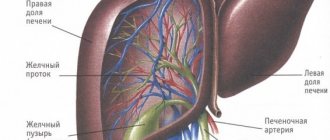≡ Home → Valerian → Valerian preparations →
Like all medicines, valerian tablets can bring not only benefits to the body, but also harm. When used correctly, the drug provides a stable sedative and hypnotic effect, helps reduce anxiety and normalize sleep. Valerian is also used in complex therapy for diseases of the digestive system, biliary tract, heart and blood vessels.
Despite the low number of side effects caused by valerian, pills containing it can be dangerous.
Before you decide to drink valerian, you should definitely consult your doctor. It has an extensive list of contraindications and can cause serious side effects. Valerian can cause severe intoxication of the body, affect blood pressure and even heart function. Before starting treatment, it is imperative to compare the expected benefits with all the risks.
Beneficial properties of valerian
The main properties of valerian, according to the World Health Organization Monograph, are sedative and hypnotic. However, due to the fact that the rhizomes and roots of valerian contain about 100 different biological substances, it has a multifaceted effect on the human body.
To date, the following properties of valerian have been scientifically confirmed:
- Sedative;
- Hypnotic;
- Antispasmodic;
- Hypotensive;
- Choleretic.
These effects only appear when the drug is taken regularly over a long period. In different cases, the course of treatment with valerian can last from two weeks to a month. Taking the medicine for a shorter period of time is not advisable, since the effectiveness of the drug increases in proportion to the amount of active substances of the plant accumulating in the body.
A single dose of valerian, as a rule, does not have a sedative effect, which provokes people to drink it and exceed the dosage.
Valerian exerts its influence on various organs and systems mainly indirectly. It affects the central nervous system and has an inhibitory effect on it. As a result, nervous excitement decreases and falling asleep becomes easier. Also, the drug, by acting on the central nervous system and directly on the heart muscle, helps normalize heart rhythm, and by dilating blood vessels, lowers blood pressure.
For sleep disorders and nervous agitation, valerian can be prescribed as the main drug. In the treatment of mild or chronic diseases of the cardiovascular system or gastrointestinal tract, the drug is used only in complex therapy.
Some varieties
Valerian includes more than 250 species, of which at least 30 grow in our country. Most of the varieties have certain healing properties.
Valerian officinalis
The most famous and used in folk medicine is a tall species. It has a straight hollow stem, branched at the top, and a short rhizome, no longer than 4 cm. In many countries, including Russia, it is grown on an industrial scale for pharmaceutical use, although it is not the only medicinal variety. The leaves are dissected, the flowers are small, collected in a large paniculate (less often thread-like) inflorescence. It has good decorative properties when planted in groups. For medicinal purposes, the rhizome is dug up in the second year of life.
Valerian recumbent
A dwarf variety that can be grown as a ground cover. Forms a curtain no more than 7 cm in height. The flowers are small, light, pink-lilac, collected in dense inflorescences up to 3 cm in volume. Tolerates shading well, but in the sun it produces compact plantings with higher decorative qualities. It grows well on its own.
Mountain valerian
Medium-sized variety up to half a meter high. Petiolate large oval leaves form a basal rosette. The panicles of the inflorescences are lush, consisting of many small buds of pale pink color. Unlike the previous species, it will prefer places with partial lighting and is moisture-loving. Flowering is early, in the first two months of summer.
Valerian stone-loving
A low-growing species, excellent for decorating rock gardens and rockeries. Stems are slightly curved, ascending, low. The total planting height does not exceed 20 cm. The leaves are long-petiolate, pubescent, pink inflorescences, racemose. Easily tolerates cultivation on poor rocky soils. When planting in rocky crevices or under stones (for example, in rockeries), you should choose places on the eastern side.
Valerian red
A representative of the subfamily, belonging to another close genus, Centranthus, and is still rarely found in Russian gardens. It grows up to a meter in height, blooms fragrantly and for a long time with small snow-white or crimson flowers, collected in lush dome-shaped inflorescences. In addition to significant growth, the plant tends to grow in width. The most popular varieties for gardens are Coccineus and Albiflorus.
Sedative and hypnotic effects of the drug
The sedative and hypnotic properties of valerian have been studied in a fairly large number of clinical studies. Their results proved that when the tablets are used correctly for 2-4 weeks, they help reduce anxiety, nervous excitability and insomnia.
The effectiveness of a single dose of valerian tablets is extremely low. They do not allow you to fall asleep quickly, do not cause a feeling of strong relaxation, and do not calm you down under serious stress. Depending on the individual reaction of the human body to the drug, it can cause slight relaxation, promoting calm, or have virtually no effect.
It is recommended to take valerian for:
- Episodic or chronic insomnia;
- Prolonged falling asleep and other sleep disorders;
- Nervous excitement, anxiety and stress.
In 2002, a group of researchers led by G. Zeigler conducted a study that compared the effectiveness of valerian extract and oxazepam. The experiment involved 186 men and women aged 17 to 73 years, divided into 2 groups. Participants in one took valerian tablets before bed for 6 weeks, and in the other, oxazepam. After 2 and 4 weeks of treatment, all subjects noted certain improvements in their condition.
Final testing was carried out 6 weeks later. It showed that 30% of participants who took valerian experienced relief from insomnia, decreased time to fall asleep, improved sleep quality and decreased mental stress. The same changes were noted by 24% of participants from the second group. Similar results, indicating a slightly greater effectiveness of valerian compared to oxazepam, were obtained in other studies.
It is also useful to read: Does homeopathic Valerian help Hel in cases where regular valerian is used?
At the same time, experts claim that valerian is ineffective for serious disorders in the functioning of the nervous system and can be dangerous in diseases that lead to inhibition of the functions of the central nervous system. Also, due to its ability to enhance the effects of other sedatives and hypnotics, valerian should not be taken simultaneously with them.
Interesting Facts
- The smell of valerian spread over the surface is very popular with domestic cats. It not only attracts their attention, but literally drives them crazy. The animal begins to roll on the floor or wrap circles around an object that emits the smell of valerian. In some cases, it may be noted that the cat looks as if after taking narcotic drugs. However, not all breeds are susceptible to this influence. It has been proven that small kittens are completely indifferent to the smell of valerian. It is also interesting that some cat breeds are resistant to the smell of valerian. For example, valerian tincture has no effect on Siamese cats
- According to ancient legend, a certain Panteley the healer went into the forest early in the morning to collect medicinal herbs. When he came out into a forest clearing, he was stunned by the beauty that had opened up to him: strange plants grew among the bushes, gray in the morning light. It was as if there were a lot of soft pink lights glowing in the dark hanging in the air. There was a feeling as if thin, light streams were rising straight from the ground and gently swaying in the morning cool. Panteley cautiously entered the clearing and, after thinking a little, began to dig up the ground in search of the roots of the mysterious plant. And then he was surprised to discover that the more he collected roots of strange flowers, the better and more at ease he felt. When the bag was filled to the brim, at the same time the healer’s soul was filled with joy and joy. On the way home, Panteley distributed amazing roots to people he met along the way, and they, inhaling the aroma of the plant, immediately began to experience an extraordinary surge of vigor and vitality. This is how the herb valerian was discovered
Antispasmodic and choleretic properties of valerian
Valerian tablets have a mild antispasmodic and choleretic effect. The latter is provided by the organic acids and some other components contained in the essential oil of the plant. They affect the glandular apparatus of the gastrointestinal tract and increase bile secretion. Valerian is used for certain diseases of the gallbladder and biliary tract.
Ultrasound for gallbladder pathology, when valerian tablets may be needed.
The drug has an antispasmodic effect on smooth muscle organs. It reduces spasms and, with long-term use, prevents their occurrence. Thanks to this property, valerian can be useful for diseases of the digestive system, accompanied by spastic conditions.
Since the antispasmodic effect does not appear immediately, but after a course of treatment and is mild, valerian tablets are prescribed as an additional remedy in complex therapy.
general description
Valerian is a herbaceous perennial of the Honeysuckle family. It has many other names, of which the most common are “goatee”, “cat moun (or grass)”, averyan, fever root, shaking grass (help with “shaking”, falling sickness).
Valerian is a fairly tall plant; it can often grow taller than human height. It has a vertical short and thick rhizome, overgrown with numerous additional thin roots up to 20 cm long. The stem is erect, weakly branched, hollow inside. The imparipinnate leaves are arranged oppositely, petiolate in the lower part of the stem and sessile in the upper part. Valerian blooms in June and continues to bloom for 2-2.5 months. The flowers are small, fragrant, attracting bees, collected in a corymbose inflorescence. After flowering, a small achene of an elongated ovoid shape ripens on the fistula stem.
Valerian leaves are great for adding to tea.
Effect of the drug on blood pressure
Valerian helps lower blood pressure. By affecting the central nervous system, it has an indirect effect on the heart and blood vessels. Also contained in valerian, borneol and some other components act on the coronary vessels, promoting their expansion. Thanks to this, the effect of normalizing coronary circulation is observed. A decrease in blood pressure also occurs due to vasodilation.
The hypotensive effect, like other actions of valerian, appears only with long-term use. According to numerous studies, valerian tablets contribute to a stable decrease in blood pressure and prevent its sharp tales. The drug is used for hypertension and some other cardiovascular diseases.
Dosage forms
Decoction
20 gr. (2.5 tbsp) pour 200 ml of chopped root. water. Bring to a boil and simmer over low heat for 15 minutes. Remove from heat, cover with a lid, insulate and leave for 45 minutes. Strain, squeeze out the raw materials. Using boiled water, bring the resulting broth to its original volume.
Take 30-45 ml. (2-3 tbsp) 3-4 times a day half an hour after meals.
For older children, take 10 ml. (1 des.l.), junior - 5 ml. (1 tsp).
Tincture
In a glass container (preferably dark glass), pour finely ground valerian officinalis raw material (root) with high-quality vodka or 70% alcohol in a ratio of 1:5. Close the container tightly with a lid and leave in a dark place at room temperature for a week, remembering to shake periodically. Squeeze out the raw materials. Let the tincture settle and strain using gauze folded in four.
Take 20-30 drops in a small amount of water three times a day, half an hour after meals.
A single dose for children is as many drops as the child is old.
In what cases can the use of valerian be dangerous?
Valerian preparations have a number of contraindications that must be taken into account. Although the product is considered low-toxic, it can be dangerous if used incorrectly.
Valerian is contraindicated for:
- Inhibition of central nervous system functions;
- Hypotension;
- Atherosclerosis;
- Heart attack;
- Stroke;
- Inflammation of the liver;
- Kidney inflammation;
- Intestinal inflammation;
- Allergies are not its components in some other cases.
Typical allergy to valerian.
Valerian is included in various preparations, which may contain additional medicinal components. In this regard, their contraindications may differ.
In such products, hops and mint may cause additional side effects.
Since valerian, when taken regularly, helps lower blood pressure, it should not be taken by people with hypotension. The drug can cause blood pressure to drop to critically low levels.
The tablets also have a certain effect on the blood. They promote blood clotting, which is why in atherosclerosis there is a risk of blood clots. This can lead to complications of cardiovascular disease such as heart attack and stroke.
You should not drink valerian in diseases accompanied by depression of the functions of the central nervous system, since valerian has a sedative effect, and in this case it is undesirable. You should also take into account that tablets can enhance the effect of other sedatives, hypnotics and antispasmodics. Taking them together is not recommended, as an overdose may occur.
Experts also advise pregnant women and nursing mothers to refrain from taking valerian. The effect of the drug on the course of pregnancy, fetal development and the well-being of the infant has been practically not studied in clinical studies. Since the drug does not have a teratogenic effect, sometimes doctors still prescribe it to pregnant women. It should be borne in mind that there are valerian preparations, the use of which is permissible, and those that are completely contraindicated.
Valerian is also used with caution in children. Up to 3 years of age, the drug is completely contraindicated, and from 3 to 12 years of age it is allowed as prescribed by a doctor in small dosages.
Similar species
When harvesting valerian officinalis, you should pay special attention to species similar in appearance to it, which often grow nearby. Some of them are poisonous and, therefore, if used incorrectly and carelessly, can cause harm to health. Similar types of valerian officinalis are:
- medicinal swallowtail – Vincetoxicum hirundinaria (Alexitoxicon officinale (Moench) St. Lager) – poisonous;
- Lobel's hellebore - Veratrum lobelianum Bernh - poisonous;
- hemp sapling – Eupatorium cannabinum – poisonous;
- meadowsweet (meadowsweet) – Filipendula ulmaria Maxim.
In addition, there are valerians, although they look similar to medicinal valerian, but do not have medicinal properties. First of all, this is whole-leaved valerian (Valeriana simplicifolia Kabath), etc. They can be distinguished by the absence of a characteristic recognizable aroma of rhizomes.
What harm can the drug cause to the body?
Valerian should be taken as prescribed by a doctor, following the recommended dosage and duration of use. Exceeding doses or duration of treatment increases the risk of overdose and side effects.
An overdose of valerian can occur in two cases: when taking a large number of tablets at a time or taking them regularly for more than 1-2 months. In case of an overdose, severe intoxication of the body may occur, and nausea, vomiting, diarrhea, dizziness, loss of consciousness, trembling hands, rapid heartbeat and other symptoms may also appear.
On a note
The amount of active ingredient in different valerian preparations can vary significantly. Most tablets are available in dosages ranging from 20 to 40 mg, but there are also tablets with a dosage of 200 mg. To avoid accidentally causing an overdose, be sure to read the instructions before taking the medicine.
The risk of side effects increases if recommended dosages are not followed. However, they can appear even if the drug is used correctly.
The main side effects of valerian are:
- Drowsiness;
- Apathy;
- Decreased performance;
- Decreased concentration;
- Depression;
- Hypotension;
- Disturbances in the functioning of the gastrointestinal tract;
- Nervous excitability;
- Headache;
- Sleep disorders.
In some cases, valerian may have effects that are opposite to those desired. In particular, if the dosage is exceeded, the tablets can cause nervous agitation, sleep disturbances and insomnia. There is also a risk of increased blood pressure and increased heart rate.
It is recommended to drink Valerian without a break for no more than 1 month. With prolonged use, a lot of the active ingredients of the drug can accumulate in the body, which can cause drowsiness, apathy and other symptoms that appear when the central nervous system is depressed. The latter is especially undesirable in childhood.
The instructions for using valerian in tablets are relatively simple, which does not prevent many patients from violating it.
Studies have also found that taking valerian in high doses for two or more months can cause hypotension and bradycardia. According to some experts, the drug can also be addictive. However, this fact does not have reliable evidence.
On a note
The smell of valerian is very attractive to cats, but its preparations can be harmful to their health. On cats they do not have a sedative, but a strong stimulating effect. It is also undesirable to give tablets to cats because they contain a large dose of the active substance and many auxiliary components, which is why they can cause allergies, intoxication and even death.
Blank
It is better to collect biennial roots; they contain the greatest amount of nutrients and vitamins. The valerian rhizome is dug up, cleared of soil, washed and dried a little in the fresh air. Dry by spreading it in a small layer in a dark and well-ventilated room or in a dryer at a temperature not exceeding 50 degrees. For uniform drying, it is recommended to periodically turn the raw materials over. Store in a tightly closed container in a cool and dry place. During drying and storage, valerian rhizome enhances its healing properties and aroma (this is due to the formation of essential oils).
Should I take valerian tablets?
When used correctly, valerian has a slow but stable effect, which is fully manifested only after a course of treatment. As for the effectiveness of the drug in emergency cases, it is extremely low. When taken once, the effect of the medicine is insignificant, so it is not prescribed when there is an urgent need to lower blood pressure, ease a spasm, or reduce nervous tension.
Scientific studies have mostly studied the sedative and hypnotic effects of valerian. Their results showed that the drug can improve sleep quality, reduce the time it takes to fall asleep and reduce nervous arousal. It should be borne in mind that for complex diseases of the nervous system, valerian is ineffective.
In the treatment of diseases of the cardiovascular system and digestive tract, valerian is prescribed only together with other drugs. Due to its weak therapeutic effect, it is not recommended to be taken as a primary drug.
Only a doctor can determine the advisability of prescribing valerian after making a diagnosis. When used correctly, the product can be effective and safe. If you drink valerian without taking into account contraindications or without knowing all its pharmacological properties, you can cause significant harm to your health.
Where does it grow
Valerian herb grows in Europe, Asia, South and North America. In Russia it grows everywhere, except in the Far North and desert zones. Loves swampy areas, wet forests and bushes, meadows, banks of rivers, lakes and streams.
Valerian officinalis medicinal properties










